Getting a grip on benzodiazepines can be tricky, especially if you or a loved one are struggling with dependence or addiction. This post aims to cover the basics of three different types of benzodiazepines and effective rehab strategies to help you regain control.
By the end, you’ll understand the nuances of each type, potential rehab methods, and how to take actionable steps toward recovery.
Understanding Benzodiazepines
Benzodiazepines are a class of psychoactive drugs commonly prescribed for anxiety, insomnia, and other conditions. They work by enhancing the effect of a neurotransmitter called GABA, which results in a calming effect. However, their potential for dependence and abuse is high, making it crucial to understand them thoroughly.
Common Uses of Benzodiazepines
Doctors often prescribe benzodiazepines for a variety of issues, including anxiety disorders, insomnia, and even muscle spasms. They’re incredibly effective, but their potential for addiction is something to be wary of.
Side Effects and Risks
Common side effects include drowsiness, dizziness, and impaired coordination. Long-term use can lead to tolerance, meaning higher doses are needed to achieve the same effect, which can escalate into dependence or addiction.
Importance of Awareness
Being aware of the risks and benefits of benzodiazepines can help you make informed decisions about their use. This knowledge is particularly crucial if you’re considering rehabilitation.
Three Common Types of Benzodiazepines
Understanding the different types of benzodiazepines is an essential first step in addressing potential issues with these medications. Each type has its own specific uses, strengths, and risks.
Alprazolam (Xanax)
Alprazolam, commonly known as Xanax, is one of the most prescribed benzodiazepines for anxiety and panic disorders. It acts quickly but has a short half-life, which can lead to frequent dosing and a higher risk of dependence.
Diazepam (Valium)
Diazepam, or Valium, is often prescribed for anxiety, alcohol withdrawal, and muscle spasms. It has a longer half-life, making it less likely to require frequent dosing but still carries a significant risk for abuse and dependence.
Lorazepam (Ativan)
Lorazepam, also known as Ativan, is used for anxiety and seizure disorders. It has a moderate half-life and is often used in hospital settings for short-term management of acute anxiety.
Recognizing Dependence and Addiction
Identifying the signs of benzodiazepine dependence or addiction early can make a significant difference in the effectiveness of treatment strategies.
Physical Dependence
Physical dependence occurs when your body becomes so used to the drug that you experience withdrawal symptoms when you stop taking it. Symptoms can include sweating, shaking, and severe anxiety.
Psychological Addiction
Psychological addiction manifests as cravings and compulsive drug-seeking behavior, often despite knowing the harm it causes. This type of addiction can be harder to recognize but is no less severe.
The Importance of Early Detection
Detecting signs of addiction early can improve the chances of successful rehabilitation. Paying attention to changes in behavior, increased dosage, and withdrawal symptoms can be crucial.
Effective Rehabilitation Strategies
Once dependence or addiction is identified, the next step is to explore effective rehabilitation strategies tailored to your needs.
Medical Detoxification
Medical detox is often the first step in treating benzodiazepine addiction. Under medical supervision, detox helps manage withdrawal symptoms safely and effectively, setting the stage for further treatment.
Behavioral Therapy
Behavioral therapy focuses on changing the patterns of thinking and behavior that contribute to substance abuse. Cognitive-behavioral therapy (CBT) is particularly effective in treating benzodiazepine addiction.
Support Groups
Support groups like Narcotics Anonymous (NA) can provide emotional support and accountability. Being part of a community that understands your struggles can significantly enhance your recovery process.
Combining Different Strategies
A combination of medical detox, behavioral therapy, and support groups often yields the best results for those struggling with benzodiazepine addiction.
Holistic Approaches
Incorporating holistic approaches like yoga, meditation, and nutrition can complement traditional rehab strategies, providing a well-rounded approach to recovery.
Long-Term Support
Long-term support is crucial for maintaining sobriety. Continued therapy, support groups, and regular check-ins with healthcare providers can help sustain recovery.
The Role of Family
Family support can significantly impact the success of rehabilitation. Educating family members about benzodiazepine addiction can help them provide the emotional and practical support needed for recovery.
Reach Out to Arrowwood Addiction Treatment Center Today
Benzodiazepines are highly effective medications that can provide relief to those struggling with anxiety and other disorders. However, as with any medication, it’s crucial to understand the potential risks and side effects associated with them. By being aware of these factors and recognizing the signs of dependence or addiction early on, you can take proactive steps toward recovery.
At Arrowwood Addiction Treatment Center, we understand the unique challenges that come with overcoming substance abuse. Our team of experienced professionals is dedicated to providing tailored treatment plans and ongoing support to help individuals achieve long-lasting sobriety.
If you or a loved one is struggling with benzodiazepine addiction, don’t hesitate to reach out to us today for help and guidance on the road to recovery. Remember, it’s never too late to take the first step towards a healthier, happier life.

